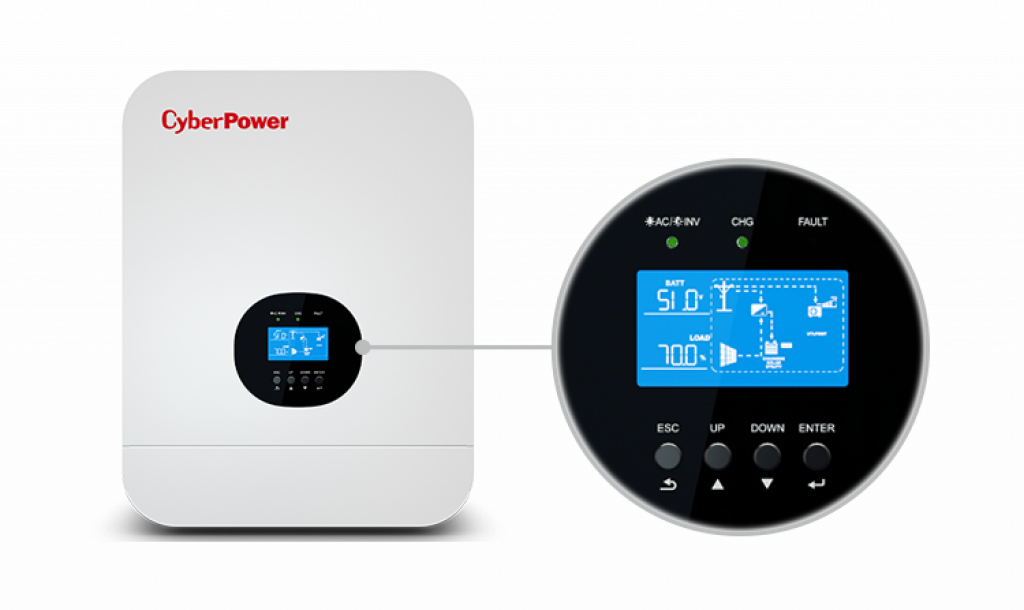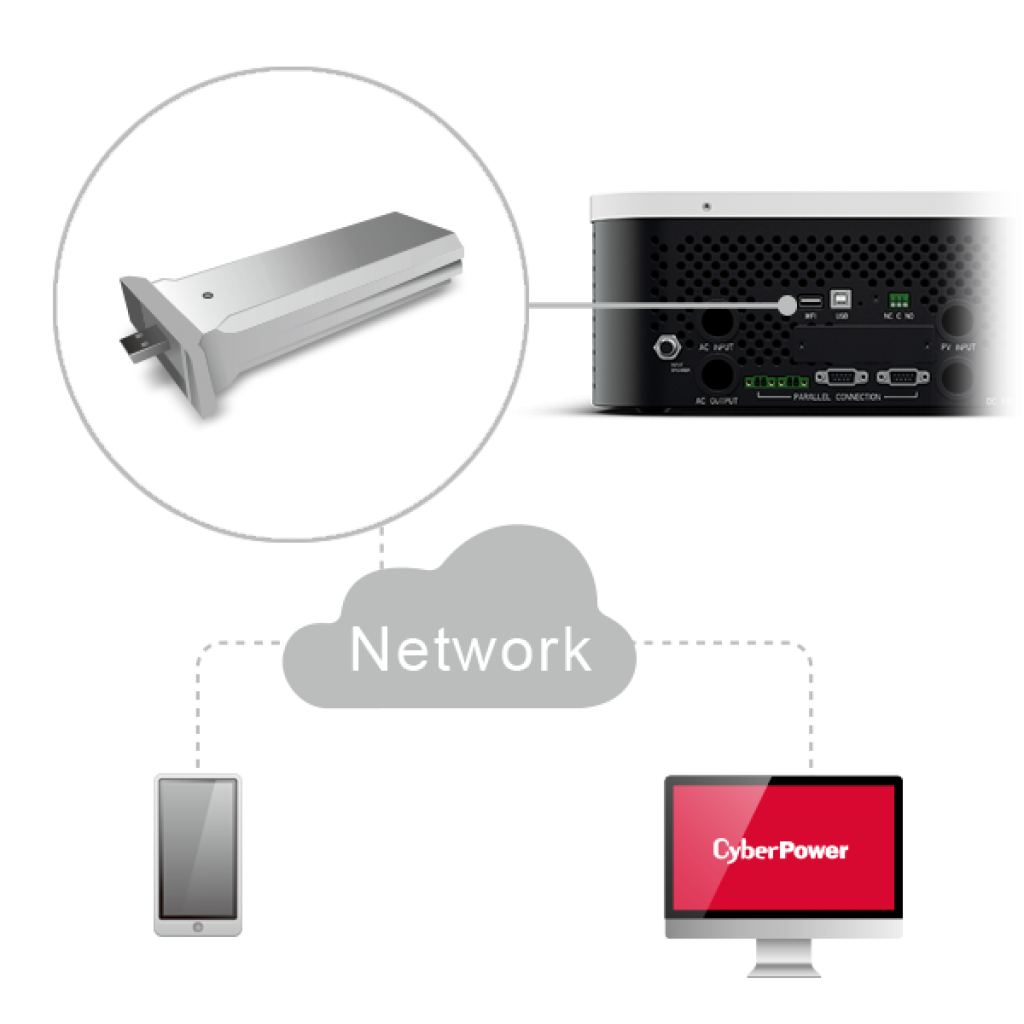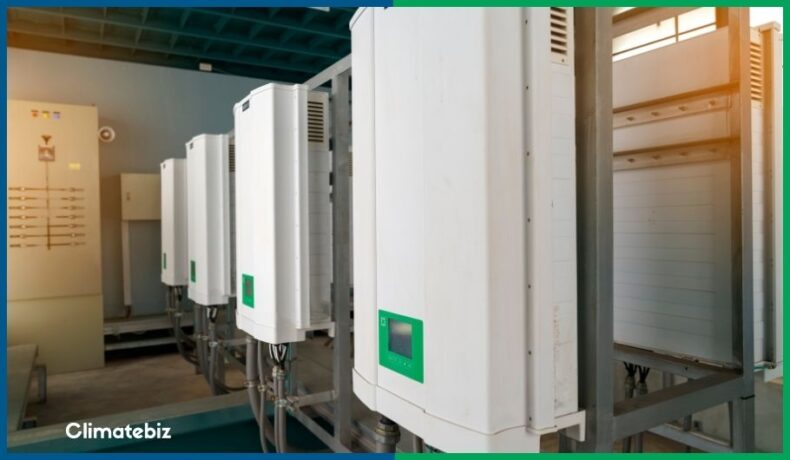An off-grid inverter is the brain of any off-grid system, but how do these types of inverters work?
In this day and age, chances are you’re looking for ways to reduce your energy bill and dependence on fossil fuels. Well, if you have the finances, maybe it’s time you join the other 250,000 Americans who’ve already taken the leap and are embracing an off-grid lifestyle.
Thanks to recent technological developments and mass adoption, you can make this goal a reality at a surprisingly low cost and without sacrificing your comfort level. The three main components of an off-grid system — solar panels, batteries, and off-grid inverters — are now more accessible than ever.
This article shines a light on the latter by discussing the central role of these inverters and details how they would operate in real-life scenarios.
Table of Contents
What Is An Off-Grid Inverter?
An off-grid inverter is an intelligent power electronic system that controls the current flow and voltage level between the components of your off-grid system — without being connected to your local utility company.
As such, it ensures a continuous and seamless energy supply to your home appliances.
As you can see in the image below, an off-grid inverter is a big box with a front LCD screen that features a real-time view of your system’s essential information. In addition, it comes with a mobile phone app for remote monitoring and control.


Off-grid inverters are relatively new; the first models were developed in the early 2010s. The idea behind this inverter’s creation was to integrate existing components to provide an efficient and user-friendly energy system without relying on a grid connection.
Off-grid inverters combine the following electronic components:
Let’s now see how they work in a completely off-grid system.
How Do Off-Grid inverters Work?
The following image illustrates how an off-grid plays a central role in your off-grid system:

Off-Grid Inverter Inputs & Outputs
Additionally, an off-grid inverter performs 5 primary functions:
- Optimizing solar harvest
- Charging/Discharging the batteries
- Converting DC into AC electricity for appliances
- Converting AC into DC for backup power (optional)
- Monitoring the system and ensuring safety
Function 1: Optimizing Solar Harvest
A solar panel array produces DC electricity.
Usually, off-grid inverters accept high voltage DC electricity (up to 500V DC). An off-grid inverter integrates an MPPT solar charge controller to get the most of your solar panels.
In short, the MPPT uses algorithms to find the sweet spot that maximizes solar energy harvesting at all times.
To give you an idea, the efficiency of an MPPT is around 95%.
Function 2: Charging The Batteries
In an off-grid system, the second step after harvesting solar energy is to store it in the battery.
While MPPT provides high voltage DC electricity (150V to +500V), solar batteries are usually found in 12V to 48V DC. Therefore, the off-grid inverter integrates a step-down DC-DC converter to fit the correct voltage of the battery.
Additionally, a charging algorithm ensures proper battery charging within its specification range, with an efficiency reaching +97%.
Function 3: Supplying Power To Appliances
An off-grid inverter uses a stable AC electricity output (110V, 60hz) to power your appliances. To perform this task, it includes a DC to AC converter — in which DC electricity comes from the battery or directly from the solar panels.
For reference, the most efficient inverters are pure sine wave types, reaching 90 to 95%.
Function 4: Receiving Backup Power
Off-grid inverters are stand-alone systems; they don’t need a grid connection to operate. However, in some situations (bad weather or during winter), backup power is necessary to ensure a continuous electricity supply to your household.
In this instance, an off-grid inverter accepts AC electricity from an outside source; this could be a gas generator or even a grid connection.
When the off-grid inverter receives external AC power, it will power your household while charging your batteries. For this to happen, the inverter will require an AC to DC converter with an efficiency level of 85% to 90%
Function 5: Monitoring The System And Ensuring Safety
Finally, thanks to its central role, the off-grid inverter monitors your system’s components’ power and electrical energy flux.
In real-time, you can view:
- your solar energy production and instant power,
- your battery output power and state of charge,
- your actual power consumption
This data provides you with a complete overview of your system’s daily energy metrics.
Why is this important? Energy monitoring is crucial for an off-grid system as it helps to optimize your ratio of electrical consumption vs. electrical production.
An off-grid inverter also integrates multiple safety features that prevent overload, overheating, over-discharging of the batteries, and many more.
Can Off-Grid Inverters Work Without A Battery?
Contrary to popular belief, off-grid inverters can work without a battery (or with an empty battery). This would occur in two specific cases (cases 4 and 5) described in this section.
Let’s demonstrate how and when off-grid inverters work without a battery:
As previously discussed, an off-grid inverter is connected to three electrical sources:
- Solar panels (direct source)
- AC backup, generator, or grid (secondary source)
- Battery storage (indirect source)
An off-grid inverter will always prioritize solar energy. If solar energy is unavailable or insufficient, the inverter will use battery storage or backup power to supply the load.
The following 5 real-life scenarios will demonstrate the above:
Case 1: Solar Panels Supply 100% Of The Load
This is an ideal situation for an off-grid system. In this instance, the solar electricity produced by the system equals or exceeds the power demand from the house.
For example:
The solar panels are producing 2kW, but the load is only 1kW. In this scenario, the extra 1kW can be stored in the batteries or go to waste if the batteries have reached 100% SOC (off-grid inverters cannot feed back to the utility grid).
Case 2: Solar Panels + Batteries Supply 100% Of The Load
This happens during standard off-grid system operating conditions — batteries and solar panels combine to supply the load.
For example:
If the power load is 2kW, but the solar system only produces 1kW, the off-grid inverter will compensate by receiving 1kW from the battery.
Case 3: Batteries Supply 100% Of The Load
This scenario occurs at night when no solar power is available. In this instance, batteries are the primary energy source and will last until depleted.
Case 4: Solar Panels + Backup Power Supply The Load
This scenario occurs during the day (if the batteries are empty).
In this instance, the inverter will combine solar and backup power to supply the load. If batteries are connected, the inverter will charge them at the same time.
Case 5: Backup Power Supplies The Load
Our final scenario occurs at night.
In this instance, there is no solar power available, and the battery level is low. The backup power will supply 100% of the load and charge the batteries simultaneously.
Final Thoughts
In this article, we demonstrated that off-grid inverters are the cornerstones of any off-grid energy system. They are specially designed to help you attain energy independence in a user-friendly manner.
These all-in-one solutions combine:
- An MPPT solar charger
- A battery charger/converter
- A DC/AC inverter
- A smart monitoring app
Finally, all off-grid inverters come pre-wired; you only need to connect them to your solar system, solar batteries, and a backup source. Additionally, they offer different power outputs from 2kW to 20kW, making them the solution of choice to power an off-grid cabin or house, a medium size boat, and even an RV.

